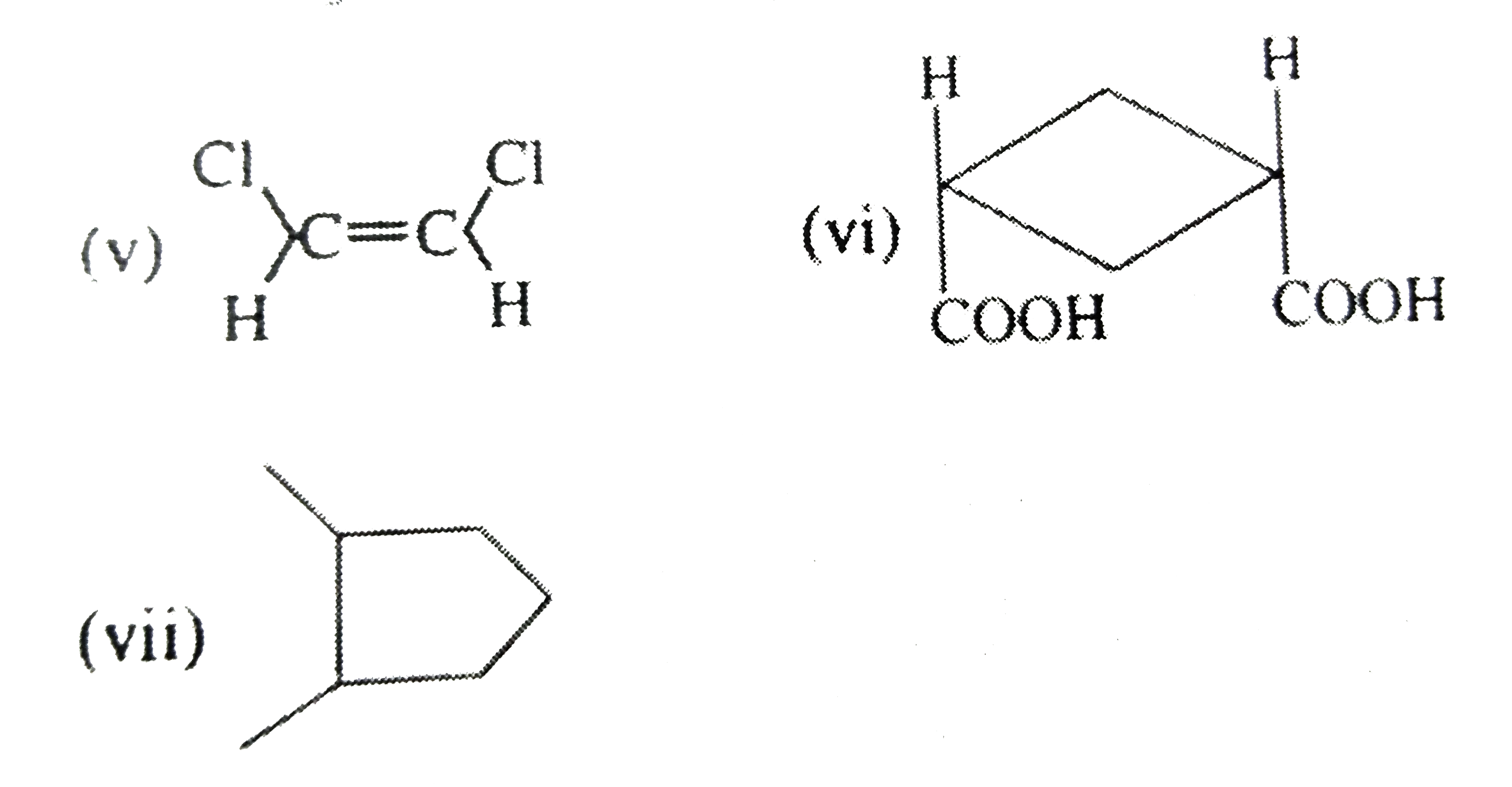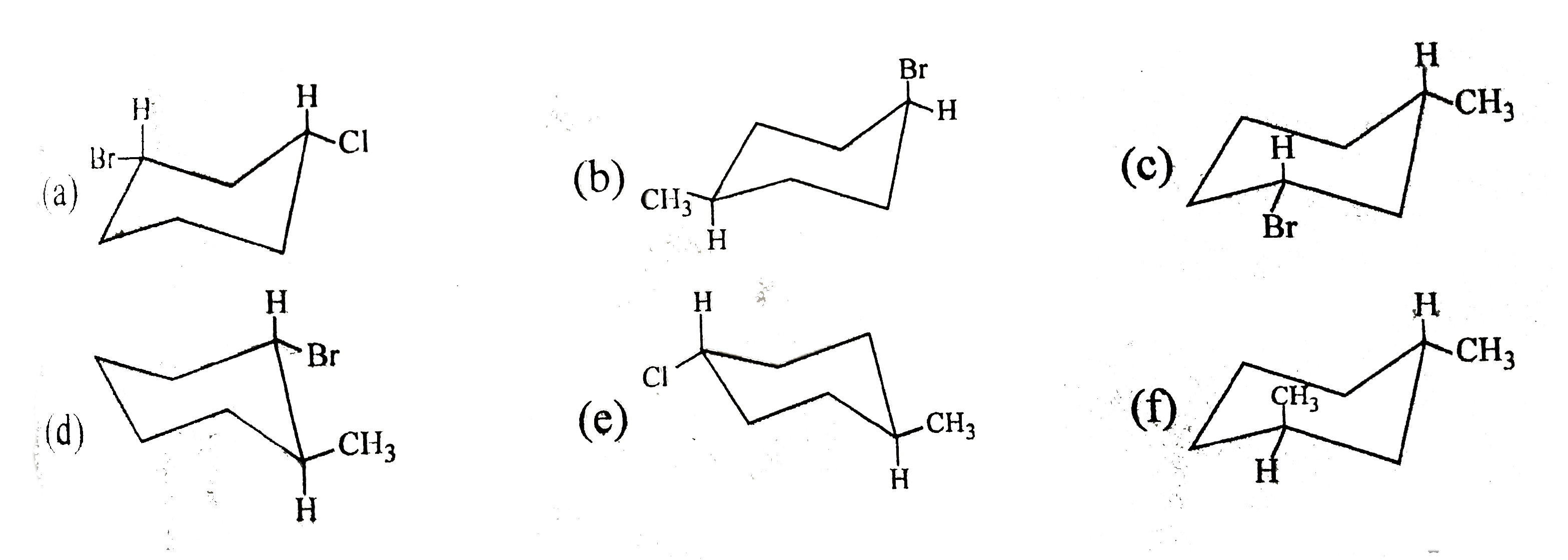Determine whether each of the following alkenes can exist ac c is trans isotmers
(a) 1 chloropropene
(b) 2-chloropropene

in 2- chloropropene it deviates from the rule that is least one same group is present on the two bonded carbon atom " Therefore -2- chloropropene cannot exist as cis- trains isomers.
Topper's Solved these Questions
- HYDROCARBONSBOOK - FULL MARKSCHAPTER - HYDROCARBONSEXERCISE - Additional Question Solved (Choose the correct statement)
26 Videos
- HYDROCARBONSBOOK - FULL MARKSCHAPTER - HYDROCARBONSEXERCISE - Additional Question Solved (Fill in the blanks )
34 Videos
- HYDROCARBONSBOOK - FULL MARKSCHAPTER - HYDROCARBONSEXERCISE - Textual Evaluation Solved (II Short Answer Question )
20 Videos
- HALOALKANES AND HALOARENESBOOK - FULL MARKSCHAPTER - HALOALKANES AND HALOARENESEXERCISE - Additional Questions Solved (5-Marks Questions)
15 Videos
- HYDROGEN BOOK - FULL MARKSCHAPTER - HYDROGEN EXERCISE - Additional Questions Solved 5-Mark Questions
10 Videos
Similar Questions
Knowledge Check
Which of the following compounds can exist both as a cis pair of enantiomers and a trans pair of enantiomers?
ACH2=CHCHCICH=C(CH3)2BCH3CHCICH=CH2CCH3CHCICH=CHCH3DCH2=CHCH(OH)CH=CH2
Which of the following compounds can show geometrical isomerism :
(i) Pent-1-ene
(ii) 1-chloropropene
(iii) 2-Methylbut-2-ene
(iv) CH3−CH=CH−CH3

View SolutionDetermine whether the following points are collinear
A(−1,−1),B(0,1),C(1,3)
View SolutionDetermine whether the points are collinear OR not
A(1,−2),B(2,−5),C(−4,7)
View SolutionTrans-1-chlroropene has higher dipole moment than cis-1-chloropropene.
(R) The resultant of the two vectors in trans-1-chloro propene is more than in cis-1-chloropropene.
View SolutionWithout expanding, prove that each of the following determinant vanishes : ∣∣ ∣∣1ab+c1bc+a1ca+b∣∣ ∣∣
View SolutionStarting with appropriate alkene show how you could use HBO to prepare each of the following:
(a) 2 - Methyl - 1 - pentanol
(b) 3 - Methyl - 2 - pentanol
(c ) 2 - Methyl - 3 - pentanol
(d) Trans - 2 - Methylcyclobutanol
View SolutionArrange the following in decreasing order of dipole moment
(a) Toluene (2) m-Dichlorobenzene
(3) o-Dichlorobenzene (4) p-Dichlorobenzene
(b) BF_(3) (2) H2S (3) H2O
(c ) cis-1 Chloropropene
(2) Trans -1 -Chloropropene
(3) 1,1-Dichloroethene .
View Solution


